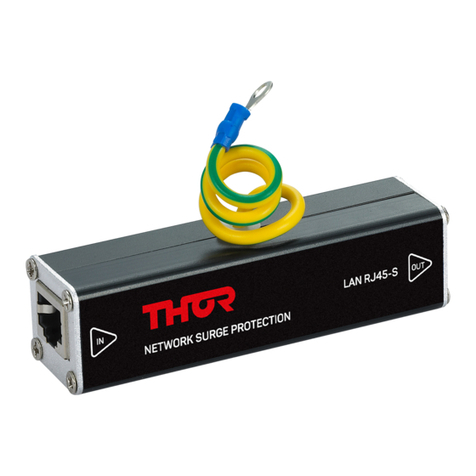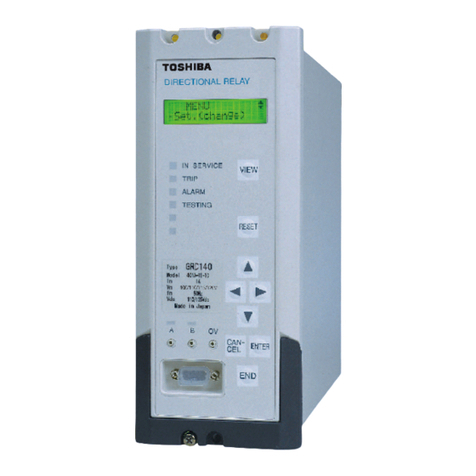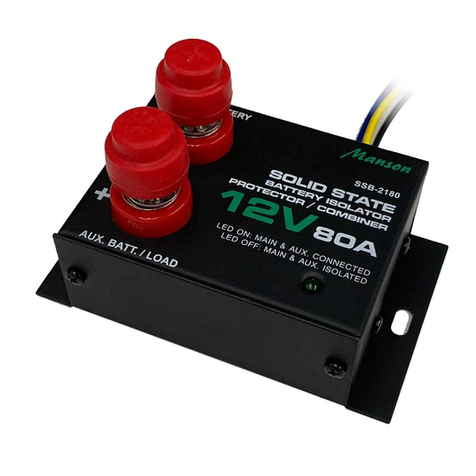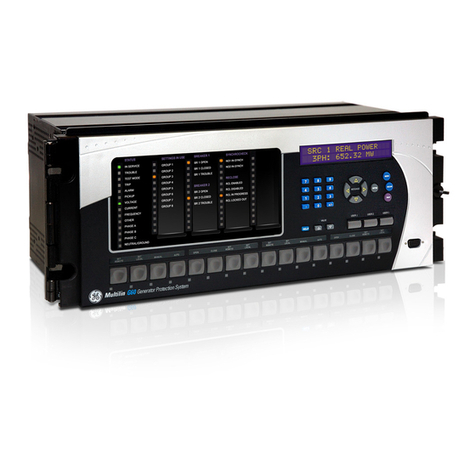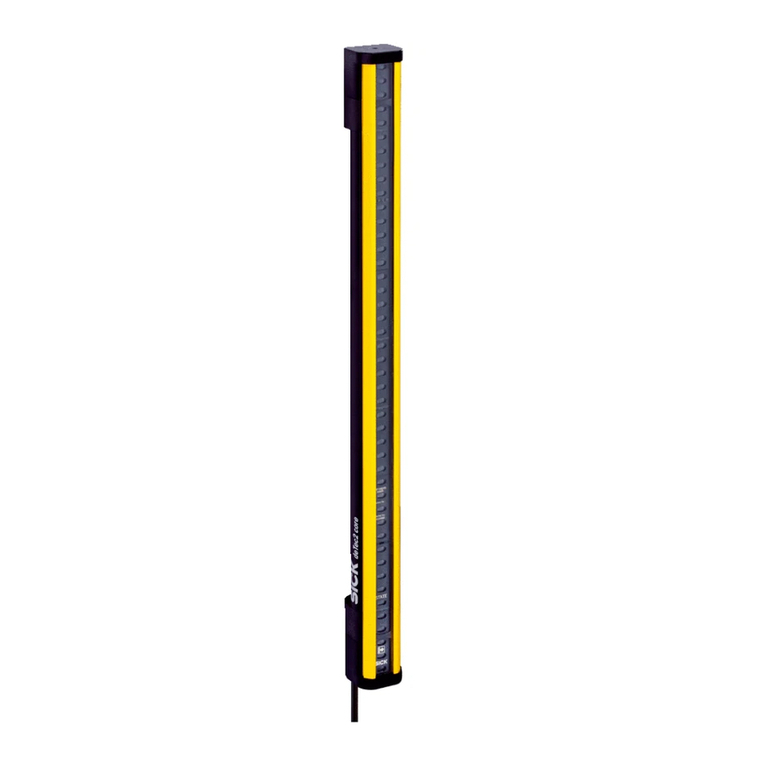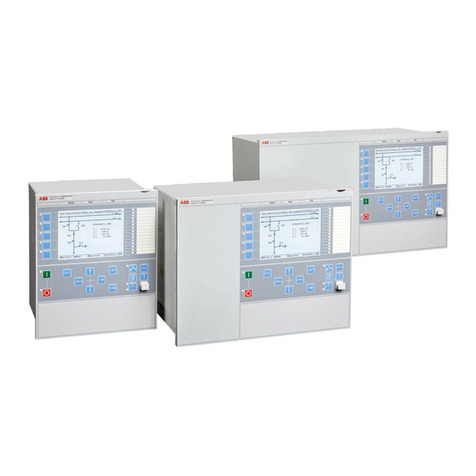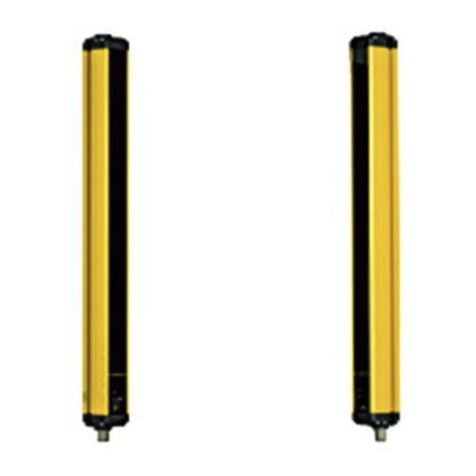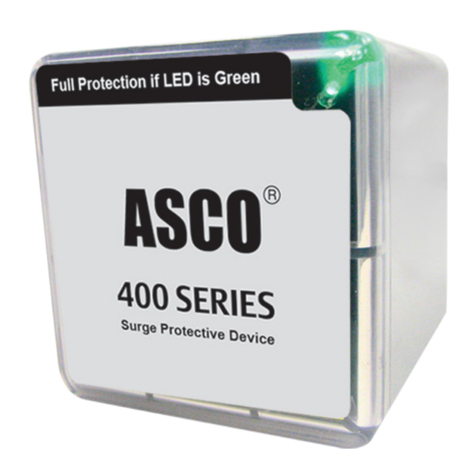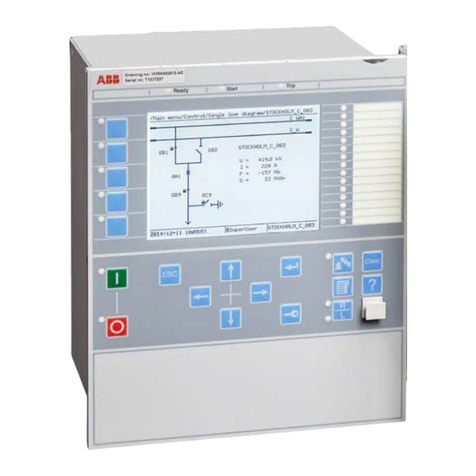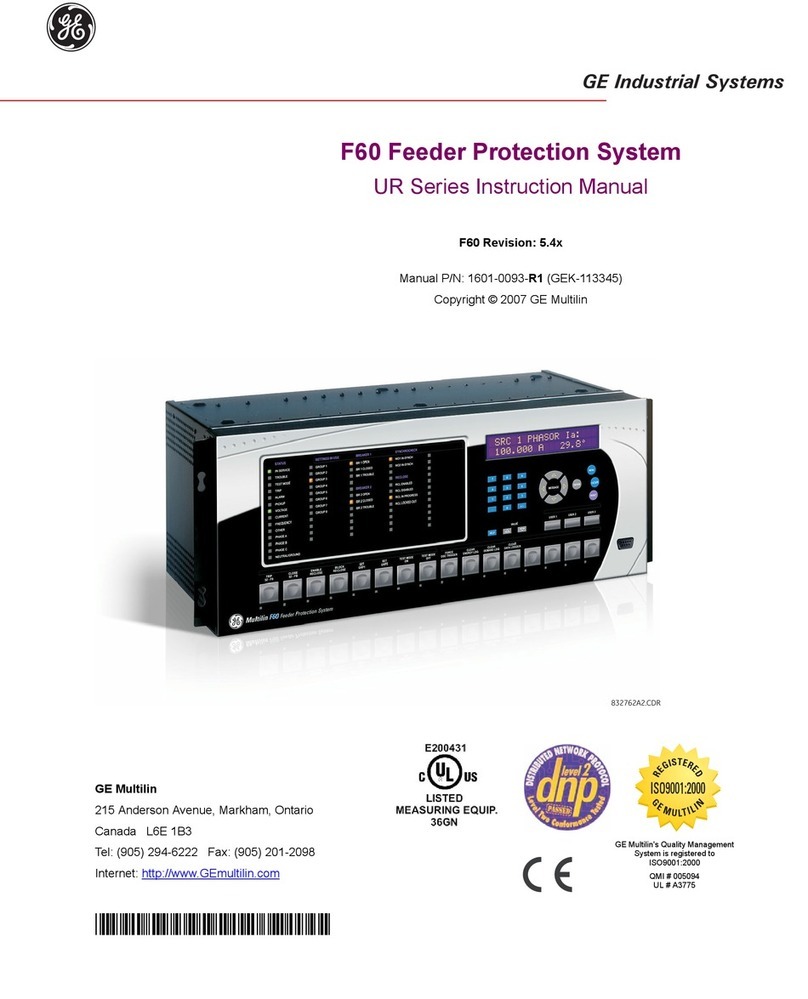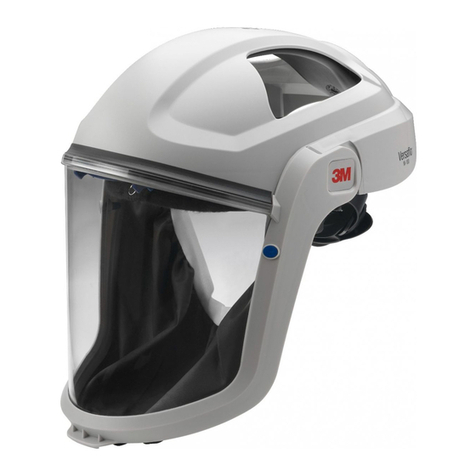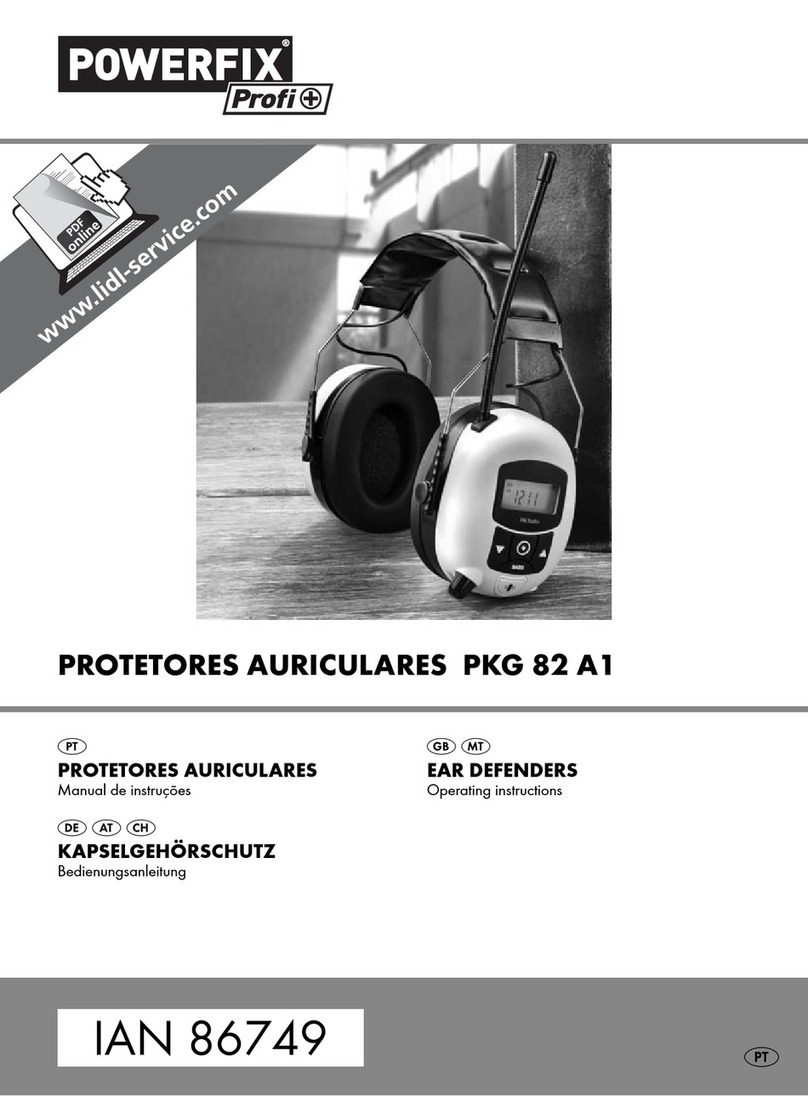FireFlex TOTALPAC N2 Installation guide

FM-076E-0-12B
Advanced Integrated Fire Protection System
Owner's Operation
and
Maintenance Manual
DRY PIPE SYSTEM
AND
CORROSION INHIBITING SYSTEM

Page ii
Integrated Fire Protection System
OWNER'S OPERATION & MAINTENANCE MANUAL
FM-076E-0-12B
Copyright © 2023 FIREFLEX Systems Inc.
All Rights Reserved
Reproduction or use, without express written permission from FIREFLEX Systems Inc, of any portion of this manual is prohibited.
While all reasonable efforts have been taken in the preparation of this manual to assure its accuracy, FIREFLEX Systems Inc
assumes no liability resulting from any errors or omissions in this manual, or from the use of the information contained herein.
TOTALPAC ® is a registered trademark of FIREFLEX Systems Inc.
FIREFLEX Systems Inc. reserves the right to make changes to this manual and the data sheets herewith at any time, without prior
notification.

Page iii
Integrated Fire Protection System
OWNER'S OPERATION & MAINTENANCE MANUAL
FM-076E-0-12B
Table of Contents
Dry Pipe System
and Corrosion Inhibiting System
General Section .......................................................................................................... Section A
1- General description
2- Listings and approvals
3- Applicable standards
4- Environment
5- Features
6- Configuration description
Mechanical Section ...................................................................................................................... Section B
1- Installation, operation & maintenance instructions
1.1 Installation
1.2 Preliminary inspection before placing the system in service
1.3 Dry pipe valve clapper settings
1.4 Placing the system in service
1.5 System operation
1.6 Emergency instructions
1.7 Inspections & tests
1.8 Maintenance
2- Dry pipe and corrosion inhibiting system trim
2.1 Normal condition
Trim Options ................................................................................................................................. Section C
1- Semi and full flanged option
2- Anti-column device option
3- ECS ® SMART Protector gas analyzer
4- ECS ® in-line corrosion detector
Air Supply ..................................................................................................................................... Section D
1- Cabinet air supplies
2- Operation
3- Maintenance and inspection
4- Air supply options
Control Section .............................................................................................................................Section E
1- Remotely supervised unit without control panel
1.1 Product description
1.2 Technical data
2- N2 ECS ® nitrogen generation control panel
2.1 Product description
2.2 Technical data
2.3 N2 ECS ® controls
2.4 PSV-D SMART vent assembly

Page iv
Integrated Fire Protection System
OWNER'S OPERATION & MAINTENANCE MANUAL
FM-076E-0-12B
Electrical Section .......................................................................................................................... Section F
1- Remotely supervised configuration
Dimensional Data & Cabinet ....................................................................................................... Section G
1- Cabinet unit
Limited Warranty .......................................................................................................................... Section H

Page 1 of 2
Integrated Fire Protection System A
General Section - Dry Pipe System
FM-076E-0-25B
1- General description
This TOTALPAC ® N2 integrated fire protection system by
FIREFLEX Systems Inc. consists of a dry pipe system trim
totally pre-assembled, pre-wired and factory tested,
combined with a nitrogen generator. All electrical and
mechanical components of the system are contained in
one single unit.
The nitrogen generator is an ECS ® PGEN-5 FF system,
manufactured by Engineered Corrosion Solutions.
The only connections required for installation are the water
supply inlet, the water discharge outlet, the main drain, the
electrical trouble, supervisory and alarm connections, as
well as the AC power lines for the ECS ® PGEN-5 FF
system and optional air compressor. The discharge outlet
is connected to a fixed piping network of automatic
sprinklers. Water is the extinguishing agent.
On system piping networks, closed heat sensitive
automatic sprinklers are spaced and located in accordance
with recognized installation standards in order to detect a
fire. Only those sprinklers immediately over or near to fire
operate, minimizing water damage.
Dry pipe system uses closed automatic sprinklers on the
system piping network, which is supervised with air
pressure. A low pressure gives a supervisory signal.
Dry pipe system is designed so the dry pipe valve will
open when an important loss of pressure from the system
piping network occurs. When the dry pipe valve opens,
water will flow into the system piping network and out of
any open automatic sprinklers and other opening on the
system. The opening of the dry pipe valve gives an alarm
signal.
Note: Every TOTALPAC ® N2 unit is identified with its unique
serial number. This number is located on an adhesive
label inside the main door panel and is used to maintain a
record in our computerized data base. Have this serial
number handy when calling for information on your unit
(format is TN####).
2- Listings and approvals
In addition to being fabricated and tested under tight
ISO-9001 manufacturing and quality control procedures,
your TOTALPAC ® N2 unit uses UL/ULC and/or
FM approved components and has also been tested and
approved by recognized laboratories.
Here is the list of Listings & Approvals it meets:
- Factory Mutual Research <FM>: Dry pipe TOTALPAC ® N2
systems are FM Approved under the heading: "Automatic
Sprinkler Systems" when installed with specific
components.
WARNING Any unauthorized modification or addition made
on-site to a factory built unit may void the unit's warranty.
Consult your nearest FIREFLEX Systems authorized
distributor before proceeding with such modifications or
additions.
3- Applicable standards
The TOTALPAC ® N2 complies with the following standards:
- NFPA-13 Sprinkler Systems
- NFPA-15 Water Spray Fixed Systems
- NFPA-72 Fire Alarm Systems
Before installation, the contractor installing the unit shall
also be familiar with the following documents and
standards:
- Applicable Local & State Building Codes
- Any additional requirements of the Local Authority Having
Jurisdiction
4- Environment
TOTALPAC ® N2 unit shall be installed in a dry and clean
location. Verify that all equipment is properly heated and
protected to prevent freezing and physical damage. Refer
to section E CONTROLS for environment data.
The unit and its components must be kept free of foreign
matter, freezing conditions, corrosive atmospheres,
contaminated water supplies, and any condition that could
impair its operation or damage the components.
The frequency of the inspections and maintenance will
vary depending on these environmental conditions as well
as the condition of the air supply to the system. The owner
is responsible for maintaining the fire protection system
and devices in proper operating condition. Refer to
section B MECHANICAL for maintenance instructions.
5- Features
5.1 General features
The TOTALPAC ® N2 unit manufactured by FIREFLEX
Systems Inc. which has developed and introduced the
concept of integrated fire protection systems.
Main features are:
Trouble free design for safe and easy application
Available in 2 sizes: 4" (100 mm) and 6" (150 mm)
diameter
Uses Engineered Corrosion Solutions ® PGEN-5 FF, the
best value in nitrogen generation technology
Limits the liability of early pipe replacement
Significant cost savings by using black pipe in
combination with nitrogen
Uses the Viking dry pipe valve
Compact, aesthetic and easy to move
User-friendly standardized owner's manual with every
unit
Unique serial number on every unit
Uses only c-UL-us Listed and FM Approved components
Designed in accordance with NFPA Standards

Page 2 of 2
A
Integrated Fire Protection System
General Section - Dry Pipe System
FM-076E-0-25B
Trim is fully assembled and tested at the factory
All trims are galvanized steel, Listed and Approved for
175 PSI (1207 kPa) service maximum
Quick connections to water supply and drain on both
sides, and sprinkler riser on top of unit, all available with
grooved end or flanged fittings
No open drain cup inside unit
Sturdy 14 gauge steel cabinet, painted fire red with oven
baked polyester powder on phosphate base
Textured rust proof finish
Neoprene gasket on all doors to eliminate vibrations
Separate unlocked access hatch to emergency manual
release
Key-alike locks on all cabinet doors
Manufactured under ISO-9001 quality control procedures
5.2 ECS® PGEN-5 FF nitrogen generator features
Handles up to 950 gallons (3596 litres) of nitrogen for
sprinkler piping capacity
Initial sprinkler piping capacity lower than 250 gallons
(946 litres) only requires the ECS ® PGEN-5 FF
compressor
Fully automatic with pressure monitoring
Pre-filters and pressure regulator
Control panel with gauges, hour meter and power, fast fill
and vent switches
6- Configuration description
TOTALPAC ® N2 regular dry pipe system is built around the
Viking conventional trim using dry pipe valve model F-1.
The valve is rated up to a maximum of 175 PSI WWP
(1207 kPa) and is available in the following diameters:
4" (100 mm) 6" (150 mm)
TOTALPAC ® N2 dry pipe system is supplied with groove/
groove deluge valve. Unit with flange/flange deluge valve
is also available on request.
6.1 Dry pipe system
The system piping network is pressurized with air or
nitrogen gas. The dry pipe system uses the Viking dry
pipe valve which opens by the fusing of an automatic
sprinkler in the system piping network.
The air pressure of the system piping network above the
dry pipe valve maintains the dry pipe valve closed.
In fire condition, when an automatic sprinkler fuses on the
system piping network, it release the air pressure above
the dry pipe valve, causing the dry pipe valve to open.
Water will flow from the dry pipe system through opened
sprinklers.
6.2 ECS® PGEN-5 FF nitrogen generator
Engineered Corrosion Solutions utilizes membrane
technology in the ECS ® PGEN-5 FF corrosion inhibiting
systems in order to efficiently separate nitrogen molecules
from the air we breathe. Membrane technology has a
simple air flow design, and is easy to service.
The ECS ® PGEN-5 FF system provide an economical,
precise means of generating high purity nitrogen. Since air
is comprised of ~79% N2, we simply and cost-effectively
separate the N2 from the air. Nitrogen is an inert gas (non-
combustible) and widely used in thousands of industries
along with fire protection systems. The N2 is “generated”
by means of the air compressor pushing air into the simple,
safe membrane element, which in turn mechanically
separates N2 molecules from other molecules found within
air.
The ECS ® PGEN-5 FF nitrogen generation system
effectively inhibits electrochemical, galvanic and
microbiologically influenced corrosion (MIC), as well as
freeze-ups and ice plugs. The ECS ® PGEN-5 FF
corrosion inhibiting system produces 98% or higher pure
nitrogen on demand and introduces it to the sprinkler
piping network. In doing so, oxygen and moisture are
displaced from the piping through the ECS ® PSV-D
SMART vent system.
6.3 ECS ® PSV-D SMART vent
High purity Nitrogen must be equally distributed throughout
the entire sprinkler piping system in order to effectively
inhibit corrosion. The patented ECS ® PSV-D SMART vent
provides a low volume, constant purge of nitrogen within
sprinkler piping. The rate in which gas is evacuated from
the sprinkler piping is within NFPA guidelines and allows
breathing to occur. The ECS ® PSV-D SMART vent also
assists in drying out the residual water from a hydrostatic
test. Computational fluid dynamics modeling proves that
this is the most effective way to ensure that high purity
nitrogen reaches all branches within the sprinkler piping.
The ECS ® PSV-D SMART vent is installed within the
TOTALPAC ® N2 cabinet.
6.4 ECS ® Leak monitor alarm
Minor leaks cause the ECS ® PGEN-5 FF air compressor
to run excessively in order to maintain supervisory
pressure. The nitrogen generator and air compressor are
designed to run up to two (2) hours at a time when filling
the system to specified pressure of high purity nitrogen. If
the ECS ® PGEN-5 FF air compressor is running greater
than four (4) hours, the TOTALPAC ® N2 system activates an
audible alarm and transmit a supervisory signal to the
monitoring alarm panel. Corrective procedures must be
taken to resolve the leaks.

Page 1 of 12
Integrated Fire Protection System B
Mechanical Section - Dry Pipe System
FM-076E-0-38A
1- Installation, operation & maintenance
instructions
Note: Numbers indicated between brackets refer to figure 3
DETAILED SYSTEM TRIM SCHEMATICS from this section and
section D AIR SUPPLY.
1.1 Installation
1. Conform to local municipal or other codes regarding
installations of fire protection systems.
2. Install the TOTALPAC ® N2 unit and connect the system
according to instruction manual and technical data
supplied.
IMPORTANT ! The cabinet must be firmly anchored to the
floor using all four (4) anchoring holes (see section G
CABINET).
Note: The drain collector shall be connected to an open
drain. Do not restrict or reduce drain piping.
3. Install the system piping network in accordance with
applicable standards.
4. Connect all supervisory and alarm signals according to
electrical schematics (see section F ELECTRICAL).
5. Connect the AC power to the ECS ® PGEN-5 FF
corrosion inhibiting system on its own breaker in the
electric distribution panel (see section F ELECTRICAL).
Notes:
AC power connections must be made by a qualified
installer according to national standards and equipment
specifications.
Do not apply AC power to the equipment yet.
6. Perform preliminary inspection prior to put system in
service (see paragraph 1.2 of the current section).
7. Place the system in service (see paragraph 1.4 of the
current section).
8. Perform the annual inspection sequence (see
paragraph 1.8 of the current section).
9. If the system does not operate as it should, make the
necessary corrections according to manuals issued or
consult your distributor or FIREFLEX Systems Inc.
10. Make sure that building owner or a delegated
representative has received instructions regarding the
operation of the system.
WARNING ! TOTALPAC ® N2 unit must be installed in an
area not subject to freezing temperatures or physical
damage.
1.2 Preliminary inspection before placing the system in
service
1. Open door to mechanical section.
a) Main water supply valve (D1) must be CLOSED.
b) Priming / water level test valve (B1) must be CLOSED.
c) Air supply for system piping network must be CLOSED
(see section D AIR SUPPLY).
d) Main drain valve (D3) must be CLOSED.
e) Alarm test valve (B5) must be CLOSED. Hydraulic
alarm cut-off valve (C3) must be OPEN.
f) Gauges (B12 and E3) should show 0 PSI (0 kPa).
2. Using the built-in contractor's hydrostatic test ports (see
figure 3 of this section and section D AIR SUPPLY), fill
system piping network with water and maintain pressure
as per NFPA-13 requirements.
Caution The clapper of the dry pipe valve (A1) must be
latched open during performance of the hydrostatic test.
Do not perform a 200 PSI (1379 kPa) hydrostatic system
test with the dry pipe valve clapper in the SET (closed)
position.
WARNING ! Do not subject the pressure gauges and
pressure transducers to hydrostatic pressure above
200 PSI (1379 kPa). CLOSE gauge valves before
proceeding with hydrostatic test.
Notes :
Do not expose the Viking accelerator to the hydrostatic
test. For warnings and considerations regarding
hydrostatic testing of the Viking accelerator and other
system components, refer to Technical Data for the
equipment used.
Do not expose the ECS ® PSV-D SMART vent assembly to
hydrostatic test. CLOSE the isolation valve prior to
hydrostatic test (see section E CONTROLS). OPEN the
valve once hydrostatic test is completed.
3. Correct leaks if any before completing test.
4. Verify that main water supply valve (D1) is still CLOSED.
5. OPEN main drain valve (D3) to completely drain the
system piping network.
6. Apply AC power to the ECS ® PGEN-5 FF system. The
air supply must be CLOSED (see section D AIR SUPPLY).

Page 2 of 12
B
Integrated Fire Protection System
Mechanical Section - Dry Pipe System
FM-076E-0-38A
1.3 Dry pipe valve clapper settings
1. Fully OPEN main drain valve (D3) to completely drain the
system piping network. If the system has operated or if
water has entered the system, open all auxiliary drains
and the system test valve. Allow enough time to
completely drain the system.
2. Verify that the dry pipe system is not pressurized.
3. Use a 15/16" wrench to loosen and remove hand-hole
cover bolts from the dry pipe valve (A1) cover. Remove
hand-hole cover.
To RELEASE a latched clapper assembly for service
1. With the hand-hole cover removed from the dry pipe
valve (A1), insert the re-setting tool through the hole in
hook assembly, across the fulcrum cast on top of
clapper arm assembly until the re-setting tool contacts
the stopper on top of clapper arm assembly (see
figure 4C).
2. Apply a downward force on the end (from outside the
valve) of the re-setting tool. Hook assembly will slide
toward the hand-hole and off clapper arm assembly.
Clapper arm assembly and clapper assembly will
forcefully open, impact against latch and latch in the
open position.
Note : Inspection and cleaning procedure step 3 below is
considered part of the annual trip test.
3. Inspect and clean the internal parts of the dry pipe
valve (A1). Give special consideration to the water
seat, air seat and clapper rubber. Wipe away all
contaminants, dirt, and mineral deposits. Do not use
solvents or abrasives. Operate all parts to test freedom
of movement. Renew or replace damaged or worn
parts as required.
WARNING NEVER apply any lubricant to seats, gaskets, or
any internal operating parts of the dry pipe valve (A1).
Petroleum based grease or oil will damage rubber
components and may prevent proper operation of the dry
pipe valve.
Note: When a valve has been removed from service and is
subject to freezing or will be out of service for an extended
period of time, all water must be removed from the priming
chamber, trim piping, water supply piping and any other
trapped areas.
To SET the dry pipe valve clapper
1. With the hand-hole cover removed from the dry pipe
valve (A1), raise the latch to release spring loaded
clapper arm assembly from the latched open position
(see figure 4A).
2. Move the clapper arm assembly down toward the
horizontal position (see figure 4B).
3. While holding spring loaded clapper arm assembly
down, insert the re-setting tool through the hole in the
hook assembly across the fulcrum cast on the top of the
clapper arm assembly, until the re-setting tool contacts
the stopper as shown in figure 4C.
4. Apply a sharp upward force at the end of the re-setting
tool. Hook will slide forward on the re-setting bar and
latch the clapper closed with a positive setting action
(see figure 4C).
5. Priming water is not required and may not be desirable
where clean, good quality fresh water is not available. If
priming water is desired, fill the dry pipe valve (A1) with
water to the bottom of the hand-hole.
6. Verify that the intermediate chamber of the dry pipe
valve (A1) is free of water. No water should flow from
the drip check valve (B7) when plunger is pushed.
7. Visually inspect hand-hole cover gasket. Verify that it is
in good condition.
8. Re-install hand-hole cover, gasket and hand-hole cover
bolts.
1.4 Placing the system in service
When the dry pipe system is ready to be placed in service,
verify that all equipment is adequately heated and
protected to prevent freezing and physical damage.
1. Verify that the main water supply valve (D1) is CLOSED.
2. OPEN the main drain valve (D3). Drain all water from the
dry pipe system. If the system has operated, or if water
has entered the system, OPEN all auxiliary drains. Allow
enough time to completely drain the system.
3. CLOSE all auxiliary drains and the priming / water level
test valve (B1) on the dry pipe valve trim. The main
drain valve (D3) should remain OPEN.
4. If the system is equipped with a Viking accelerator and
external anti-flood device (see section D AIR SUPPLY):
a) CLOSE the anti-flood isolation valve (1).
b) Observe the air pressure gauge on top of the
accelerator. The gauge must read zero before the
accelerator will automatically reset. It may be
necessary to loosen, remove, and re-install (use
appropriate wrench) the air gauge to vent trapped air
pressure from the upper chamber of the accelerator.

Page 3 of 12
Integrated Fire Protection System B
Mechanical Section - Dry Pipe System
FM-076E-0-38A
5. OPEN the dry pipe system air supply and adjust pressure
switches and other devices according to water pressure
(see section D AIR SUPPLY for complete pressures
settings).
CAUTION ! Never exceed 60 PSI (414 kPa) air pressure in
the system piping with the dry pipe valve clapper closed.
Note : Increasing system air pressure may increase trip
time of the dry pipe valve (A1).
6. Verify that the intermediate chamber of the dry pipe
valve (A1) is free of water. No water should flow from
the drip check (B7) when the plunger is pushed.
7. If the system is equipped with a Viking accelerator and
external anti-flood device (see section D AIR SUPPLY),
when pressure in the accelerator air pressure gauge
equals the system set pressure, OPEN and secure the
anti-flood isolation valve (1).
8. Maintain air supply (see section D AIR SUPPLY).
Nitrogen generator will come on for nitrogen generation.
9. Partially OPEN the main water supply valve (D1).
10. When flow is developed from the main drain valve (D3),
CLOSE the main drain valve.
11. Fully open the main water supply valve (D1).
12. Secure all valves in their normal operating position.
13. Notify AUTHORITY HAVING JURISDICTION and those in the
affected area that the system is in service.
1.5 System Operation
1.5.1 In the SET condition
In the normal set condition the system piping network is
filled with compressed air or nitrogen. The clapper and air
plate assemblies of the dry pipe valve (A1) combine to
form a floating member assembly. With the clapper
assembly latched closed, system air pressure forces the
member assembly down, sealing the water seat from the
intermediate chamber.
1.5.2 In a fire condition
When an automatic sprinkler fuses on the system piping
network, the system air pressure is reduced. When
system air pressure is reduced to the differential pressure
tripping point of the dry pipe valve (A1), water supply
pressure in the inlet chamber lifts the member assembly
off the water seat and flows into the intermediate chamber.
As the member assembly continues to rise, the latching
hook is forced against operating pin which causes the
hook to pivot on hook rod and unlatch the clapper. The
clapper is spring-loaded and swings to a full-open locked
position (see figure 4A).
When equipped with the optional accelerator and external
anti-flood device, a drop in system air pressure causes the
accelerator to operate. Operation of the accelerator
causes the anti-flood device to open allowing system air
pressure to enter the dry pipe valve intermediate chamber.
This immediately destroys the pressure differential,
causing the member assembly to rise faster.
The intermediate chamber is normally at atmospheric
pressure and is connected to the alarm line. When the dry
pipe valve (A1) trips, the intermediate chamber and alarm
line are pressurized with the system water pressure.
Water will flow from any open sprinklers and/or other
opening in the sprinkler piping network and alarm
devices (C1 and optional C2) will operate.
Sprinkling continues until the main water supply valve (D1)
is manually closed.
1.5.3 Manual operation
Anytime the handle of the priming / water level test
valve (B1) is opened, pressure is released from the priming
chamber, causing the dry pipe valve (A1) to open.
Water will flow from any open sprinklers and/or other
opening in the sprinkler piping network and alarm
devices (C1 and optional C2) will operate.
Sprinkling continues until the main water supply valve (D1)
is manually closed.
1.5.4 Supervisory condition
If the dry pipe valve (A1) trips when no sprinkler has fused,
either there a loss of air in the system or an extreme
pressure surge in the water supply. If there is a loss of air
in the system, check for leaks and check for proper air
supply. If there is an extreme surge in the water supply,
increase the air pressure on the system.
CAUTION ! Never exceed 60 PSI (414 kPa) air pressure in
the system piping with the dry pipe valve clapper closed.
Note : Increasing system air pressure may increase trip
time of the dry pipe valve (A1).
If water is constantly passing through the drip check (B7)
when the valve is in the SET position, either water is
leaking over the water seat into the intermediate chamber
of the dry pipe valve (A1) or the alarm test valve (B5) is not
tightly closed. If water is leaking over the seat of the dry
pipe valve, inspect and clean the water seat and clapper
rubber. Consider replacing the clapper rubber. If the
water seat has been pitted or damaged by debris it may be
necessary to replace the base assembly. If the alarm test
valve (B5) is leaking, verify that water is not getting past
the valve.

Page 4 of 12
B
Integrated Fire Protection System
Mechanical Section - Dry Pipe System
FM-076E-0-38A
1.6 Emergency instructions
To take system out of service
WARNING ! Placing a control valve or detection system out
of service may eliminate the fire protection capabilities of
the system. Prior to proceeding, notify all local
AUTHORITIES HAVING JURISDICTION. Consideration should
be given to employ a fire patrol in the affected areas.
After a fire, verify that the fire is OUT and that placing the
system out of service has been authorized by the
appropriate local AUTHORITY HAVING JURISDICTION.
Sprinklers piping that have been subjected to a fire must
be returned to service as soon as possible. The entire
system must be inspected for damage, and repaired or
replaced as necessary.
1. CLOSE main water supply valve (D1).
Note: Electric alarms controlled by a pressure switch
installed at the ¾"-NPT (20mm) connection (C2) for a non-
interruptible alarm signal cannot be shut-off until the
deluge valve (A1) is reset or taken out of service.
2. Air supply must be CLOSED (see section D AIR SUPPLY).
3. OPEN main drain valve (D3).
4. Relieve all pressure from the dry pipe system piping. If
the system has operated, open all auxiliary drains to
allow the system to drain completely.
5. Replace any automatic sprinkler that have opened,
been damaged or exposed to fire conditions.
6. Return the system to service as soon as possible (see
paragraph 1.3 TO SET DRY PIPE VALVE CLAPPER and
1.4 PLACING THE SYSTEM IN SERVICE of the current
section).
7. Perform all recommended maintenance procedures
(see paragraph 1.8 MAINTENANCE in the current section).
Note: When a system has been removed from service and
is subject to freezing or will be out of service for an
extended period of time, all water must be removed from
the priming chamber, trim piping, water supply piping and
any other trapped areas.
1.7 Inspections and tests
NOTICE: The owner is responsible for maintaining the fire
protection system and devices in proper operating
condition.
It is imperative that the system be inspected and tested on
a regular basis in accordance with NFPA-25. Refer to
Inspections and Tests recommended in Viking technical
data describing individual components of the dry pipe
system used.
The frequency of the inspections may vary due to
contaminated or corrosive water supply, corrosive
atmospheres, as well as the condition of the air supply to
the system. For minimum maintenance and inspection
requirements, refer to NFPA-25. In addition, the
AUTHORITY HAVING JURISDICTION may have additional
maintenance, testing, and inspection requirements that
must be followed.
WARNING ! Any system maintenance that involves placing
a control valve or detection system out of service may
eliminate the fire protection capabilities of that system.
Prior to proceeding any testing, notify all local AUTHORITIES
HAVING JURISDICTION. Consideration should be given to
employment of a fire patrol in the affected areas.
1.7.1 Water priming level verifications and system
piping network low air supervisory test
1. To prevent operation of the dry pipe valve (A1) and
filling of the piping network with water during the test,
CLOSE main water supply valve (D1).
2. OPEN the main drain valve (D3).
3. CLOSE air supply (see section D AIR SUPPLY).
Note: If unit is equipped with an accelerator and anti-flood
device, this test will trip the accelerator. An air vent will
escape from the accelerator, confirming his operation.
However, since main water supply valve (D1) being closed
and main drain valve (D3) being opened, the triggering of
the accelerator should not open the dry pipe valve (A1).
4. Completely OPEN the priming / water level test
valve (B1) to verify for water. If water is confirmed, the
system may not have been drained properly. Follow
steps 1 to 10 from paragraph 1.4 PLACING THE SYSTEM IN
SERVICE of the current section and resume this test from
beginning. If there is no water, follow next steps.
5. If unit is equipped with an accelerator and anti-flood
device, CLOSE isolation valves (1 and 2) from the
accelerator.
6. Slowly OPEN the priming / water level test valve (B1).
7. Verify that low air supervisory signal operates within
acceptable pressure range and continue without
interruption (see section D AIR SUPPLY).
8. CLOSE the priming / water level test valve (B1).

Page 5 of 12
Integrated Fire Protection System B
Mechanical Section - Dry Pipe System
FM-076E-0-38A
9. Establish recommended supervisory pressure to the
system piping network (see section D AIR SUPPLY).
10. If unit is equipped with an accelerator and anti-flood
device, OPEN isolation valves (1 and 2) from the
accelerator.
11. Partially open main water supply valve (D1).
12. When flow is developed from the main drain valve (D3),
CLOSE the main drain valve.
13. Fully open the main water supply valve (D1).
14. Verify that there is no flow from the drip check (B7)
when the plunger is pushed.
1.7.2 Full flow trip test
Performance of a full flow trip test is recommended
annually during warm weather. Consider coordinating this
test with operation testing of the releasing devices.
Caution ! Performance of this test will cause the dry pipe
valve (A1) to open and the system piping network to be
filled with water. Water will flow out from any open
sprinkler and/or inspector’s tests valve. Take necessary
precautions to prevent damage.
Note : Alarms and electric signals controlled by the alarm
pressure switch (C1) cannot be interrupted.
To trip test the dry pipe system
1. Fully OPEN the main drain valve (D3) to flush away any
accumulation of foreign material. CLOSE the main drain
valve.
2. Record water pressure supply pressure (B12) and
system air pressure (E3).
3. Open the inspector's system test valve to simulate
operation of the dry pipe system.
4. The dry pipe valve (A1) should open. The piping
network will be filled with water.
5. Record the following:
a) Elapsed time from opening of the inspector's test
valve to operation of the dry pipe valve (A1).
b) System air pressure (E3) when the dry pipe
valve (A1) operated.
c) Elapsed time from opening of the inspector's test
valve to development of full flow of water from the
system inspectors test connection.
d) Any other information required by the AUTHORITY
HAVING JURISDICTION.
6. Alarm devices (C1 and optional C2) should operate.
7. Allow water to flow from the system inspector's test
connection until it appears clear and clean.
When trip testing is complete
1. Perform steps 1 through 4 of paragraph 1.6 EMERGENCY
INSTRUCTIONS to take the system out of service.
2. Perform steps of paragraph 1.4 PLACING THE SYSTEM IN
SERVICE
1.7.3 Main drain test
A main drain test shall be conducted to determine whether
there has been a change in the condition of the water
supply piping and control valves.
Test procedure
1. Record the pressure indicated by the water supply
gauge (B12).
2. If applicable, CLOSE the alarm control valve.
3. FULLY OPEN the main drain valve (D3).
4. Record residual pressure.
5. CLOSE the main drain valve (D3) slowly.
6. Record the time taken for supply water pressure to
return to the original pressure.
7. Compare results from previous inspections or initial
commissioning. Any important variation from those
results must be investigated.
Note: A main drain test shall be conducted any time the
main water supply valve (D1) is closed and reopened at
the system.

Page 6 of 12
B
Integrated Fire Protection System
Mechanical Section - Dry Pipe System
FM-076E-0-38A
1.8 Maintenance
NOTICE: The owner is responsible for maintaining the fire
protection system and devices in proper operating
condition.
The system shall be maintained in full operation condition
at all times.
All troubles or impairments shall be corrected promptly
consistent with the hazard being protected.
Refer to MAINTENANCE INSTRUCTIONS provided in Viking
Technical Data describing individual components of the
system used.
The air supply shall be maintained in full operating
condition at all times (refer to section D AIR SUPPLY).
The following requirements are based upon NFPA-25.
Records
Records of inspections, tests and maintenance of the
system and its components shall be made available to the
AUTHORITY HAVING JURISDICTION upon request. Typical
records include, but are not limited to: valves inspection;
flow, drain, and pump tests, and trip test of the deluge
valves.
Acceptance test records should be retained for the life of
the system or its special components. Subsequent test
records should be retained for a period of one (1) year
after the next test. The comparison determines
deterioration of system performance or condition and the
need for further testing or maintenance.
1.8.1 Monthly
1. Inspection of gauges (water supply (B12) and priming
chamber (B11) pressure) to ensure good condition and
normal water supply pressure.
2. Control valve shall be externally inspected. The valve
inspection shall verify the following:
a) The gauges indicate that normal supply water
pressure is being maintained.
b) The valve is free of physical damage.
c) All valves are in the appropriate open or closed
position (see paragraph 2.1 of the current section).
d) There is no leakage from the alarm drains.
1.8.2 Quarterly
1. Check alarm pressure switch (C1) and optional water
motor gong (C2) by opening the alarm test valve (B5).
2. Conduct system piping network low air supervisory test
(see paragraph 1.7.1 of the current section).
1.8.3 Semi-annually
1. Main water supply valve (D1) switch shall be operated
to verify the switch actuation upon movement of the
hand wheel.
2. Check alarm pressure switch (C1) and optional water
motor gong (C2) by opening the alarm test valve (B5).
3. Perform functional test of all components of the system.
1.8.4 Annually
1. Perform full flow trip test (see paragraph 1.7.2 of the
current section).
2. Record indicating the date of the last trip, tripping time
and name of the organization conducting the test shall
be maintained at a location available for review by the
AUTHORITY HAVING JURISDICTION.
3. Perform main drain test (see paragraph 1.7.3 of the
current section).
1.8.5 Every 5 years
1. Test on gauge (gauge precision required: less than 3%
of the full scale).
2. Perform test on control valve operation.
3. Deluge valve (A1) and their associated strainers, filters
and restriction orifices shall be inspected internally.
4. Perform main drain test (see paragraph 1.7.3 of the
current section).

Page 7 of 12
Integrated Fire Protection System B
Mechanical Section - Dry Pipe System
FM-076E-0-38A
2- Dry pipe and corrosion inhibiting system
Note: Numbers indicated between brackets refer to figure 3
DETAILED SYSTEM TRIM SCHEMATICS from this section and
section D AIR SUPPLY.
2.1 Normal condition
1. Displays
a) Green lamp of the ECS ® PGEN-5 FF system
identified POWER lights up (see section E
CONTROLS).
b) The optional SMART gas analyzer displays nitrogen
concentration value.
2. Valves
a) Main water supply valve (D1) is OPEN.
b) All upstream water supply valves are OPEN.
c) Priming / water level test valve (B1) is CLOSED.
d) Main drain valve (D3) is CLOSED.
e) Hydraulic alarm cut-off valve (C3) is OPEN.
f) Air supply is OPEN (see section D AIR SUPPLY).
g) All gauge valves are OPEN.
h) ECS ® PGEN-5 FF unit flow level valve is CLOSED
(see section E CONTROLS).
i) ECS ® PSV-D SMART vent isolation valve is OPEN
(see section E CONTROLS).
j) ECS ® PSV-D SMART vent strainer valve is CLOSED
(see section E CONTROLS).
3. Gauges
a) Water supply pressure (B12) shall not exceed
175 PSI (1207 kPa).
b) System piping network (E3) shall be adjusted as per
tables 2 and 3 at section D AIR SUPPLY.
4. Pressure switches & settings
a) Alarm pressure switch (C1) should activate when
pressurized higher than 5 PSI (34 kPa) (factory set).
b) Air pressure switch (E4-LOW / HIGH) shall be adjusted
according to water pressure as per table 2 at
section D AIR SUPPLY.
c) Refer to section D AIR SUPPLY for air pressure
settings.

Page 8 of 12
B
Integrated Fire Protection System
Mechanical Section - Dry Pipe System
FM-076E-0-38A
Figure 1 - TOTALPAC ® N2 (shown without doors)
See figures 2 and 3 for additional details.
PGEN-5 FF Unit
Isolation Switch Optional Gas Analyzer
PGEN-5 FF
N2 Generator Unit
Dry Pipe Assembly
Junction Box TBB
SMART Vent Assembly
Junction Box TBA & TBC
Optional Style "A"
Pressure Switch
Dry Pipe Outlet
Drain Outlet
(either side)
Water Inlet
(either side)
PGEN-5 FF Unit
Air Compressor
Optional Style "A"
Air Compressor
FM-061H-0-314A

Page 9 of 12
Integrated Fire Protection System B
Mechanical Section - Dry Pipe System
FM-076E-0-38A
Figure 2 - TOTALPAC ® N2 P & ID
SMART Vent Assembly
PGEN-5 FF
N2 Generator Unit
Dry Pipe Assembly
Dry Pipe Outlet
Towards Sprinklers
PGEN-5 FF Unit
Air Compressor
Optional Style "A"
Air Compressor
FM-061H-0-315A
Optional Style "A"
Pressure Switch
PGEN-5 FF Unit
System Trim
Low Air
Pressure Switch
Dry Pipe Air Kit
Nitrogen
Air

Page 10 of 12
B
Integrated Fire Protection System
Mechanical Section - Dry Pipe System
FM-076E-0-38A
Figure 3 - Detailed system trim schematic
Typical dry pipe system (4" (100 mm) system shown)
B7
C2
A
B
To Accelerator
Option
To Accelerator
Option
E4
E3
FM-061H-0-336A
FIELD CONNECTION
TO OPEN DRAIN
(on both sides)
FIELD CONNECTION
TO WATER SUPPLY
(on both sides)
FIELD CONNECTION TO
SPRINKLER PIPING NETWORK
B1
CONTRACTOR'S
HYDROSTATIC TEST PORT
(water supply side)
1
To Air Supply System Trim
C3
C1
B5
B8
B8
B3
2
To Air Supply System Trim
CONTRACTOR'S
HYDROSTATIC
TEST PORT
(system side)
A1
D1
B12
D3
1 inch connection
for sprinkler
B15
Base
(shown without enclosure)
TOTALPAC N2
Trim components
A1 Dry pipe valve
B1 Priming / water level test valve (N.C.)
B3 1/16" (1.6 mm) Restricted orifice
B5 Alarm test valve (N.C.)
B7 Drip check valve (N.O.)
B8 Swing check valve
B12 Water supply pressure gauge & valve (N.O.)
B15 7/32" (5.6 mm) Restricted orifice
C1 Alarm pressure switch (PS10-1)
C2 ¾"-NPT (20 mm) connection to optional water motor
gong (strainer to be supplied by contractor)
C3 Hydraulic alarm cut-off valve (N.O.)
D1 Main water supply valve (N.O.)
D3 Main drain valve (N.C.)
E3 System air pressure gauge & valve (N.O.)
E4 Air pressure supervisory switch (PS40-2)

Page 11 of 12
Integrated Fire Protection System B
Mechanical Section - Dry Pipe System
FM-076E-0-38A
Figure 4 - Cross section of the dry pipe valve
Dry Pipe Valve
Resetting Tool
FM-061H-0-274A
Hook
Latch
Clapper Arm
Figure 4A Figure 4B Figure 4C

Page 12 of 12
B
Integrated Fire Protection System
Mechanical Section - Dry Pipe System
FM-076E-0-38A
This page is left intentionally blank.

Page 1 of 2
Integrated Fire Protection System C
Trim Options
FM-076E-0-41A
Dry Pipe trim options
1. Semi-flanged option
When required by the user, TOTALPAC ® N2 unit can be
provided in semi-flanged configuration.
The semi flanged option provides flanged fittings only on
the water inlet pipe (side needs to be specified at the time
of order) and on the system riser outlet. The drain
manifold is then provided with a threaded end that also
needs to have its side specified (left or right). The rest of
the fittings are the same as usual with the main
components being provided in the standard flanged/
grooved configuration.
When provided, the face of the flanges will always be
located 6" (152 mm) from the outside face of the mounting
base or cabinet surface.
Figure 1 – Semi-flanged unit typical detail
(figure is shown without cabinet for clarity)
FM-061H-0-155B
Flanged fitting outside cabinet
(when provided)
Threaded end
Field connection
to open drain
(specify side)
Field connection
to water supply
(specify side)
Flanged fitting outside cabinet
(when provided)
2. Anti-column device option
The model LD-1 anti-column device is an optional trim
component designed for use with dry pipe sprinkler
system. The anti-column device automatically prevents an
unwanted water column from establishing within the
system riser. On dry pipe sprinkler systems, the anti-
column device prevents water from columning downstream
of the dry pipe valve assembly.
Figure 2 – Anti column device detail
From sprinkler riser
To drain collector FM-061H-0-146A
3. ECS ® SMART Protector gas analyzer
The ECS ® Protector SMART Gas Analyzer provides a
continuous real-time monitoring of nitrogen/oxygen
concentration levels within a dry pipe fire protection
system.
Refer to ECS ® PGEN-5 FF Installation & Operation
Manual for operation instructions.
Figure 3 – ECS ® SMART Protector gas analyzer
FM-041B-1-176A

Page 2 of 2
C
Integrated Fire Protection System
Trim Options
FM-076E-0-41A
4. ECS®in-line corrosion detector
The ECS®in-line corrosion detector is designed to provide
an early warning indication of internal corrosion activity in
water-based fire protection systems. The device is
designed to be installed outside the cabinet, where
corrosion is most likely to occur: the air/water interface. A
cross-section of the device shows the two key attributes
that allow for early detection of corrosion: an externally
milled section of the pipe that creates a “thin wall” section
and a pressure chamber created by an external sleeve
welded over the pipe. The thin wall section of the device
will fail before other system piping to provide an early
warning indication.
The ECS®in-line corrosion detector is equipped with a
pressure switch to monitor the pressure chamber and can
be remotely monitored through the low air pressure circuit
of the TOTALPAC ®N2control panel or locally through the
ECS®detector remote test station.
Refer to ECS®PGEN-5 FF Installation & Operation
Manual for installation instructions.
Figure 5 – ECS®in-line corrosion detector
Pressure Switch
Pressure
Chamber "Thin Wall"
Milled Section
FM-061H-0-284A
Other manuals for TOTALPAC N2
1
Table of contents
Other FireFlex Protection Device manuals
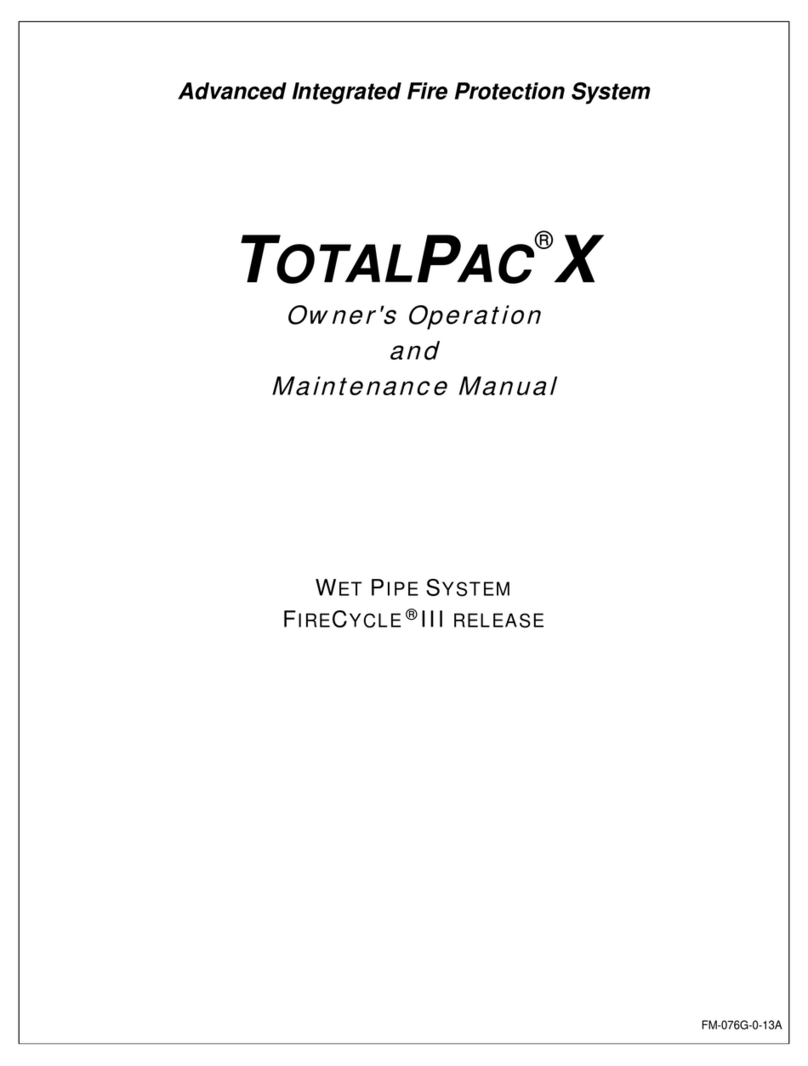
FireFlex
FireFlex TOTALPAC X Installation guide

FireFlex
FireFlex TOTALPAC X Installation guide

FireFlex
FireFlex TOTALPAC X Installation guide
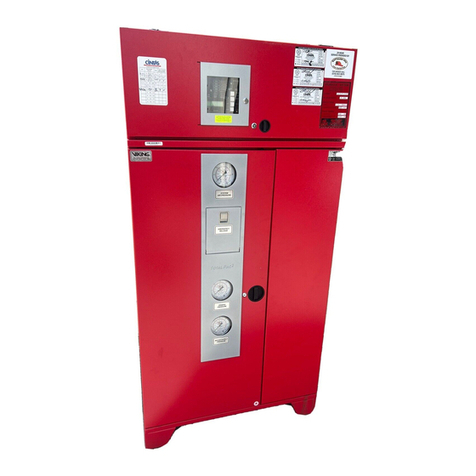
FireFlex
FireFlex TOTALPAC2 User manual

FireFlex
FireFlex TOTALPAC N2 Installation guide

FireFlex
FireFlex TOTALPAC X Installation guide

FireFlex
FireFlex TOTALPAC2 Manual

FireFlex
FireFlex TOTALPAC2 User manual
